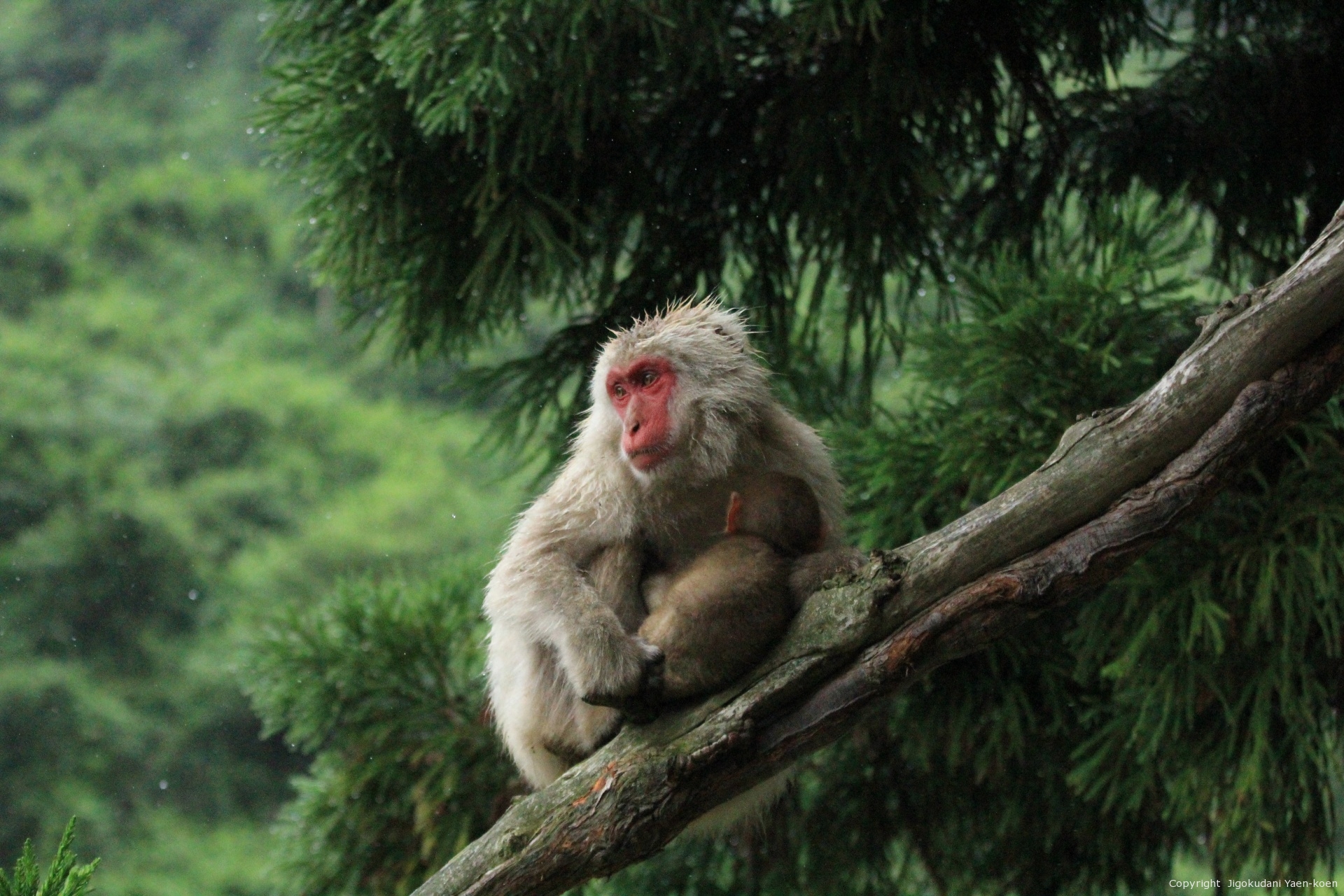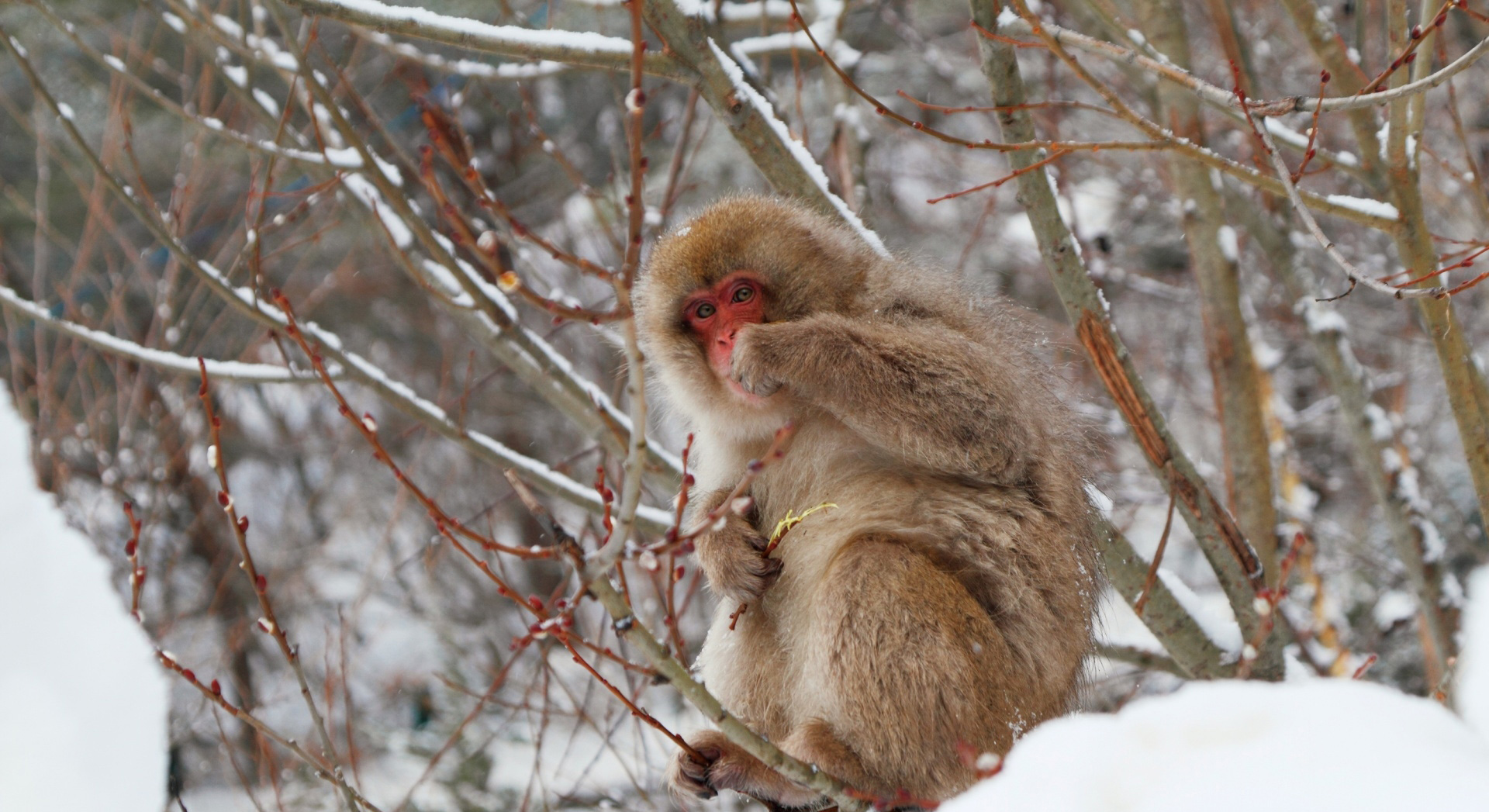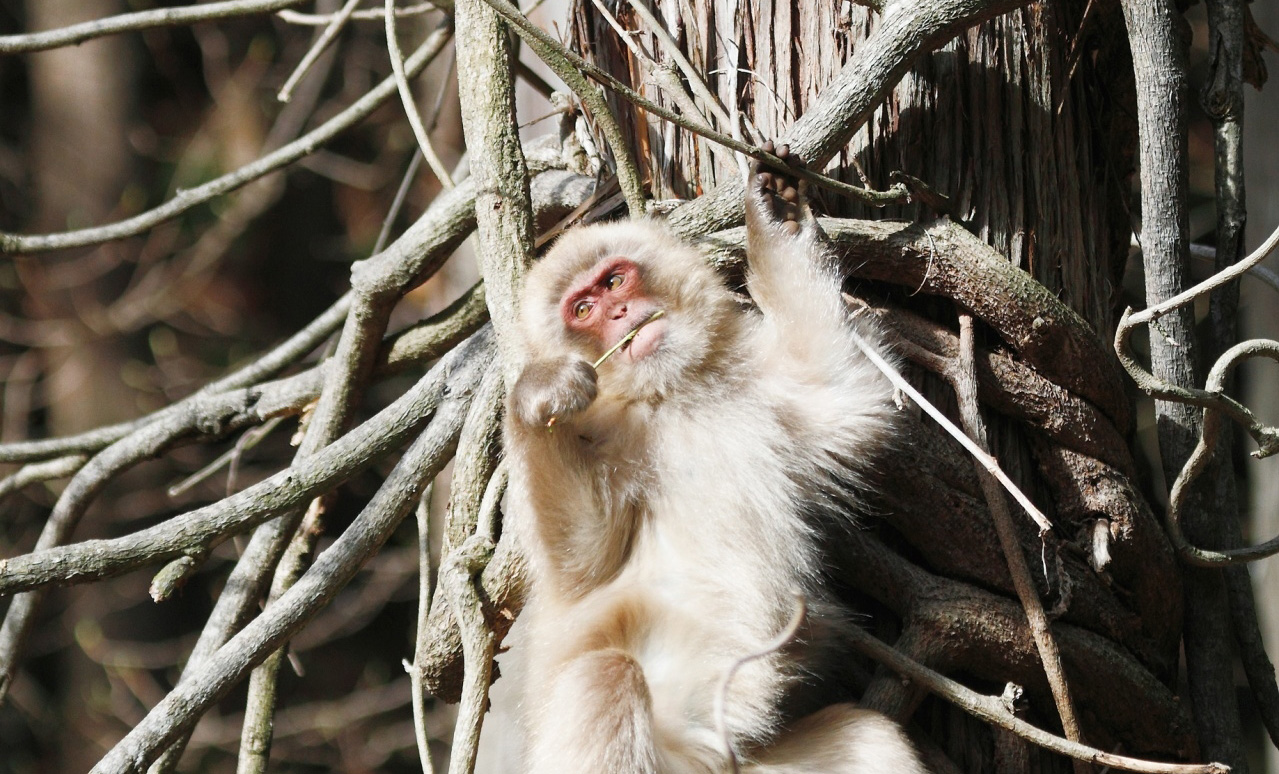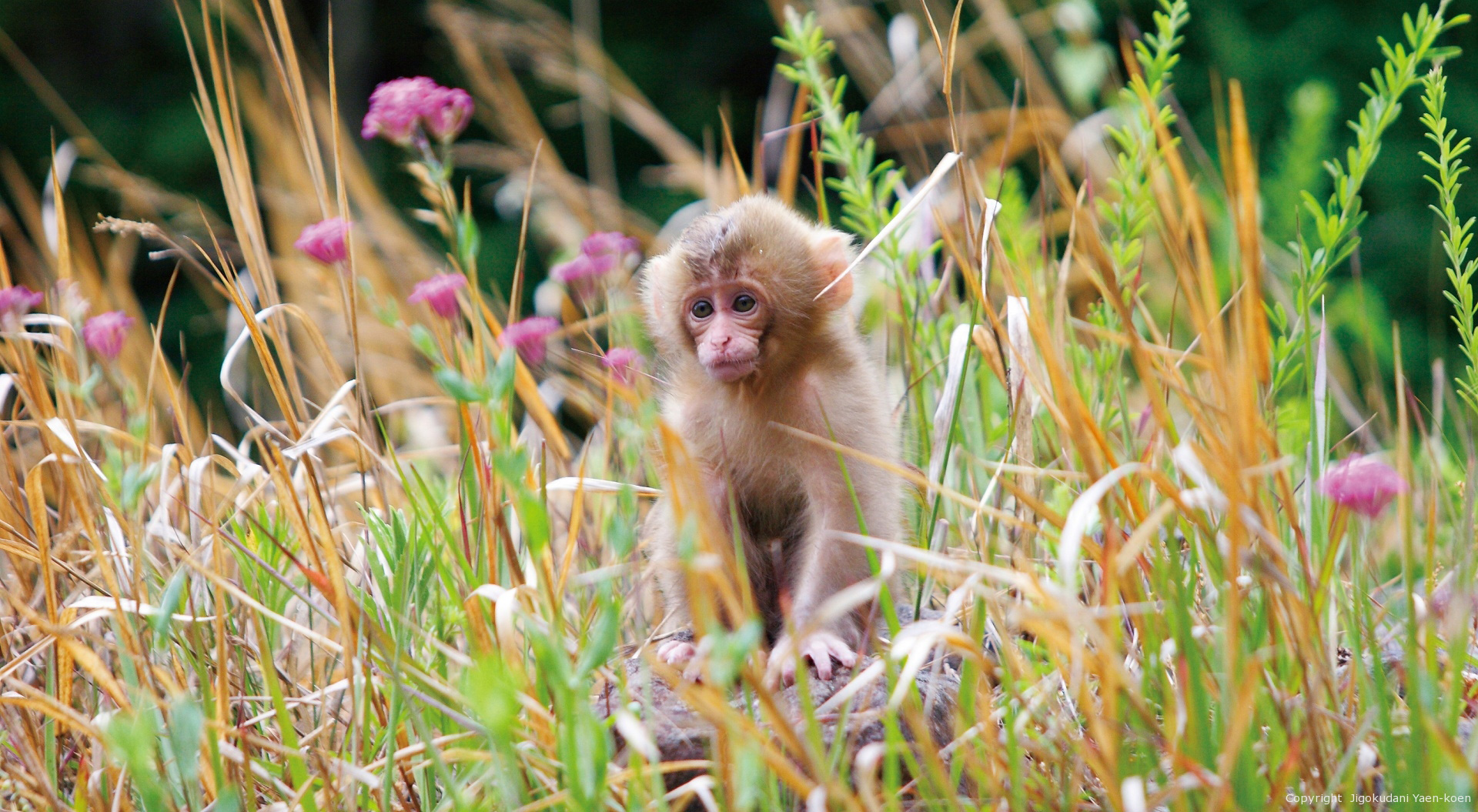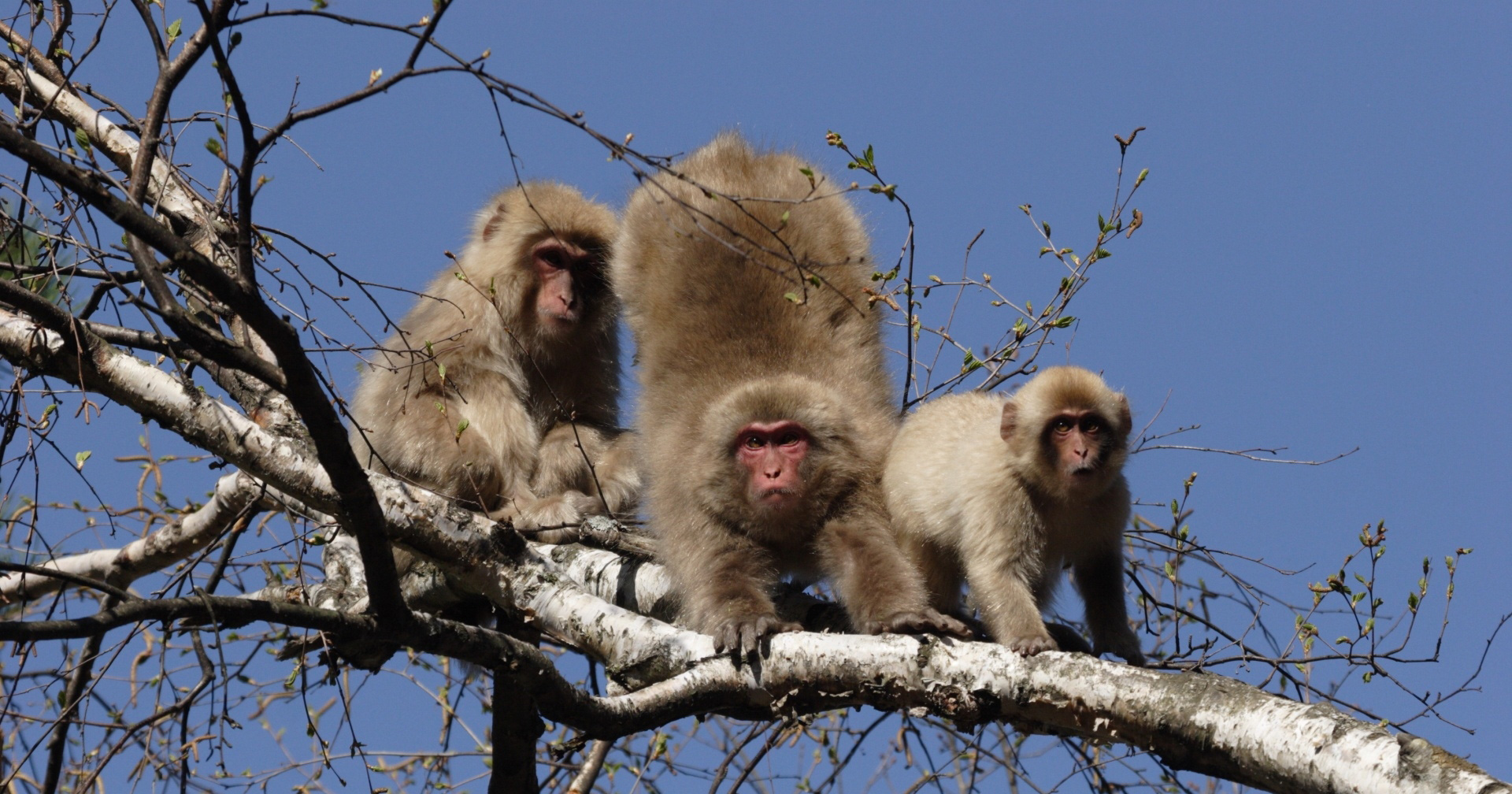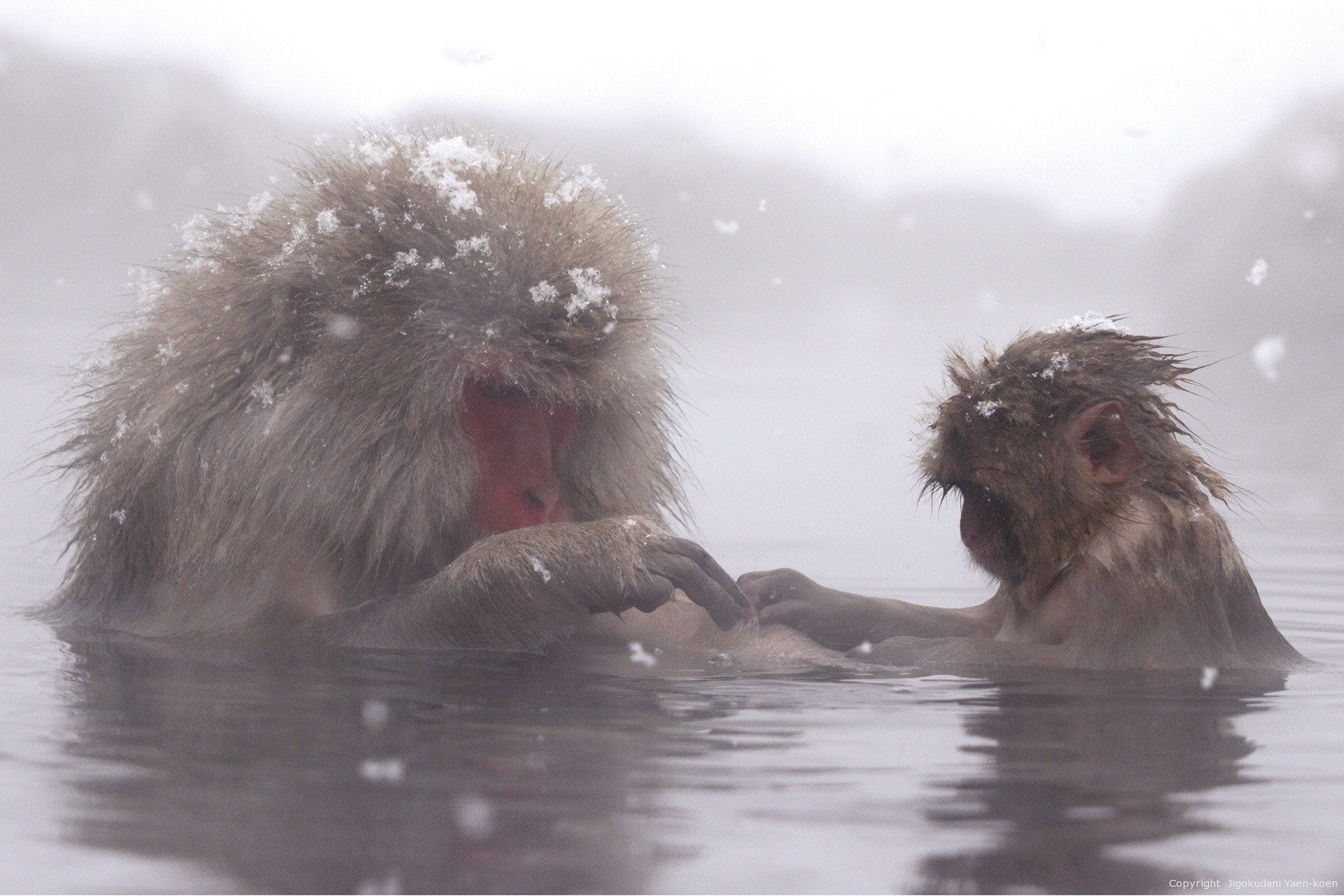A Year at Jigokudani Wild Snow Monkey Park
In spring season
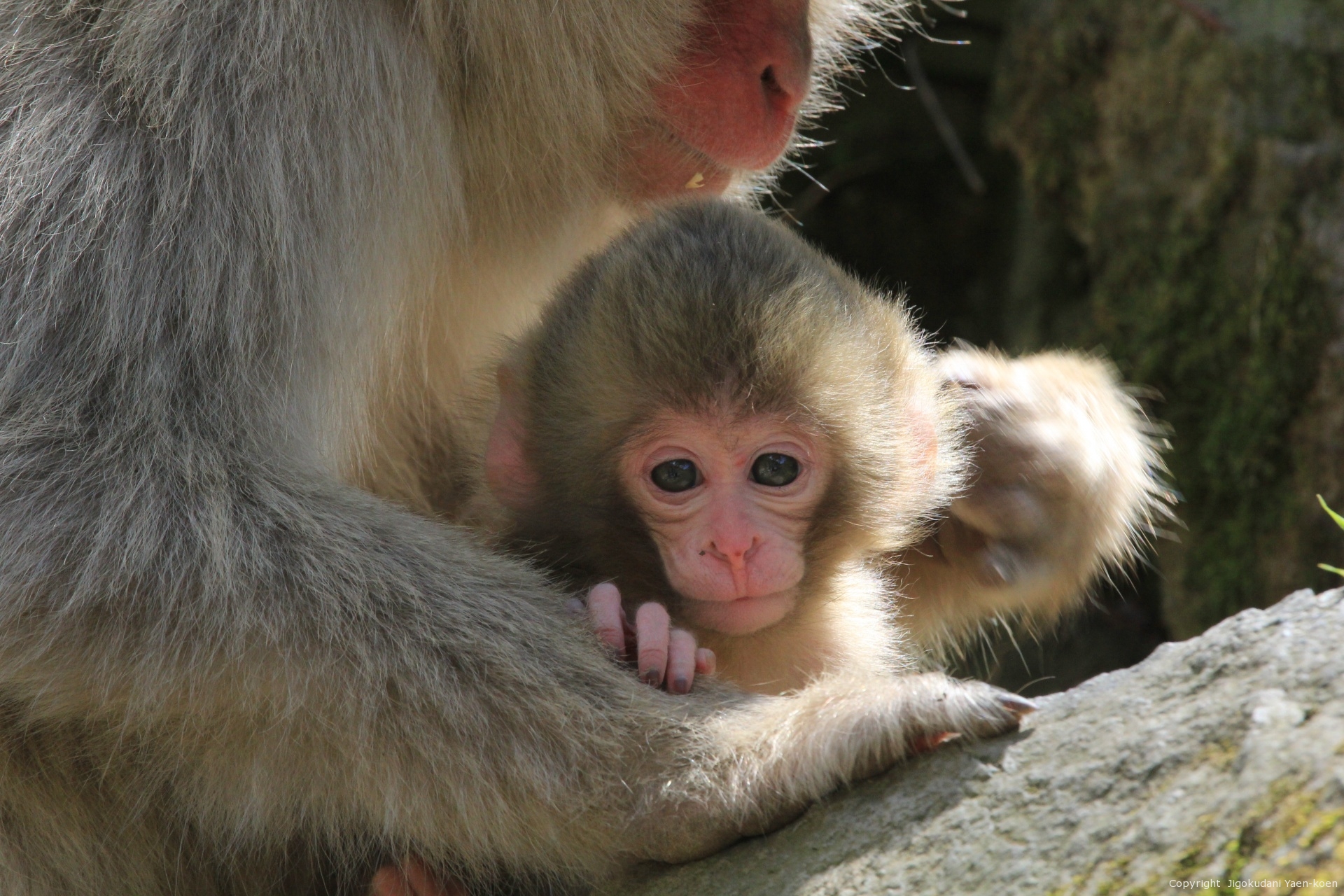
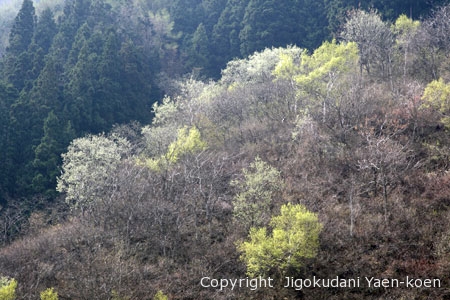
In April, spring has come to Jigokudani, it is the season of melting snow and monkeys’ eagerly-awaited season after the extreme cold winter. Many plants sprout out so that monkeys can get abundant food such as buds, young leaves of beech trees and flowers. It should be taste sweet for them.
They have a peak birth period from late April through June. You can see many newborn babies during this period.
Flog, lizard and snake come out from their hibernation. Migrant birds, such as Blue-and-white flycatcher, Siberian blue robin and Narcissus flycatcher reach here.
May, the green grows deeper. Terpnosia nigricosta buzzes in the forest.
June, it is the child-birth season of the Japanese serow followed monkeys’. If you are lucky, you may meet baby serows.
Bloom of Tea-of -heaven tells us the beginning of summer.
You should bring a light jacket until the end of rainy season.
In summer season
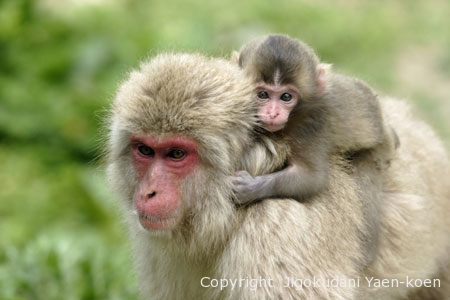
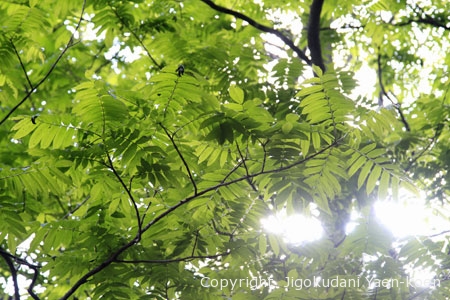
Short spring in Kita-Shinano area has gone quickly and summer season has come. Mountains are covered with deep green forest and several kinds of flowers bloom. It starts with flower bloom of early summer and we have rainy season followed by midsummer. At this time monkeys’ winter pelage starts changing to summer pelage.
Basically monkeys are not good with hot season, adult monkeys rest in the shade for long time of a day. But young monkeys are still active.
Their staple food is plants, also eat insects, but do not eat meat and fish. There are some differences of diet by habitats.
In summer season, baby monkeys born in the spring start playing with other babies in a short distance away from their mothers. They have baby teeth and start eating food other than breast milk.
You can see dragonfly and butterfly, especially Miyamakarasu-ageha (Papilio maackii).
We wouldn’t recommend wearing beach sandal or slipper even in summer season. Because there are plants with aculeus such as stinging nettle and eglantine, and also poisonous snake such as pit viper and tiger keelback. You have to be careful about mosquito, bee and gadfly.
We rarely have over 30 degrees centigrade here in Jigokudani during summer season because of the altitude, it’s over 800m. Summer in Jigokudani is short. There is a nip of fall in the air in the mid-August.
In autumn season
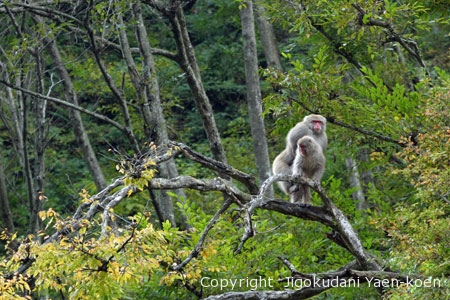
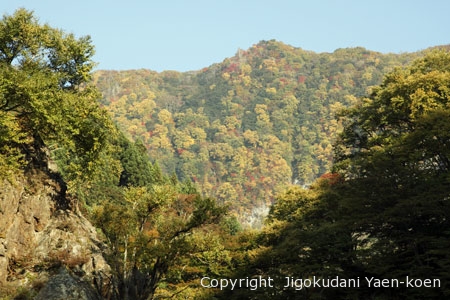
In September, late summer, fruitful season has come to the forest. This is the busiest season for monkeys. They rush through the forest seeking nourishing nuts and fruits for preparation of winter. For getting enough energy to endure winter season they need to eat much food.
Then the season moves to autumn, it is the season of copulation. Their faces and posterior turn red and males start appealing to females. The atmosphere in the troop is tense and all monkeys are nervous during this period.
At the beginning of snowing, the copulation period comes to the end and everything returns normal. And there are no more tasty nuts in the mountains.
Not only monkeys but other animals move actively for preparation of winter season. Squirrels run on the nature trail carrying nuts to their den.
The season of autumn leaves come to the valley beyond the mid- October.
In November, temperatures go down to below zero and we sometimes have frost. Then we have first snow and trees in the forest shed its leaves to wait for winter.
In winter season
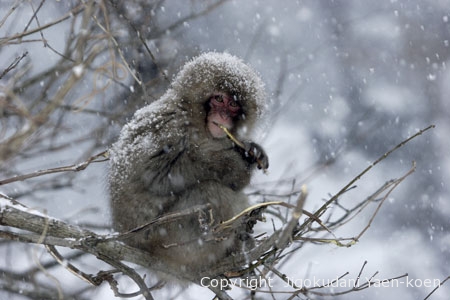
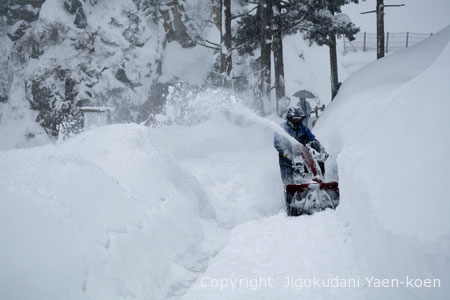
Blowing north wind with snow, this is the start of winter season here. Monkeys have to endure this long and sever season. Young monkeys born in the last spring have grown enough to find food by themselves, still feed at the breast though.
During winter seasons they can get only buds and barks. It is scant nourishing, but they really need it to survive the cold weather.
We sometimes see monkeys eating clod through the year, this behavior is considered as consumption of mineral, which cannot get from plants. They huddle together and endure extreme cold days. To get through the severe season they use the energy stored during autumn season.
In the mid-December, we usually have heavy snow. Accentors come from high mountains to Jigokudani to overwinter when snow covers the mountains.
In this season we can observe the Japanese serow easily because they (monkeys also) are on sunshiny southern slopes for long time.
The temperatures are always below zero, the lowest is minus 10digrees centigrade.
The valley of Jigokudani is very deep so the sunshine does not reach to the bottom. That’s why monkeys take the hot spring to ward off the cold.
Even warm winter has been continuing recent years, it is normal that snow accumulates 40cm-50cm in one night. The accumulated snow will be over 100cm during the coldest period between January and February. If you visit Jigoku-dani this season, you should have adequate equipments for cold protection.


